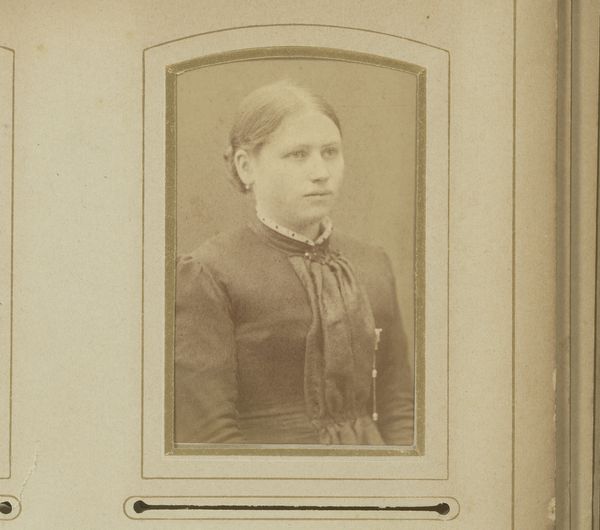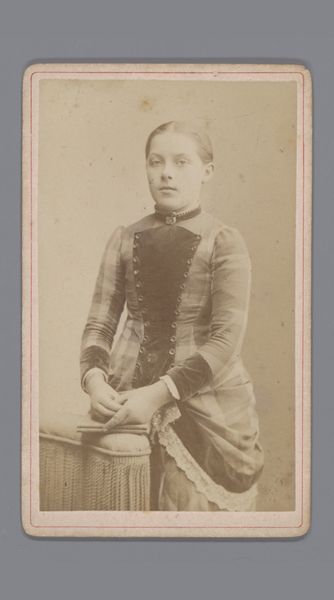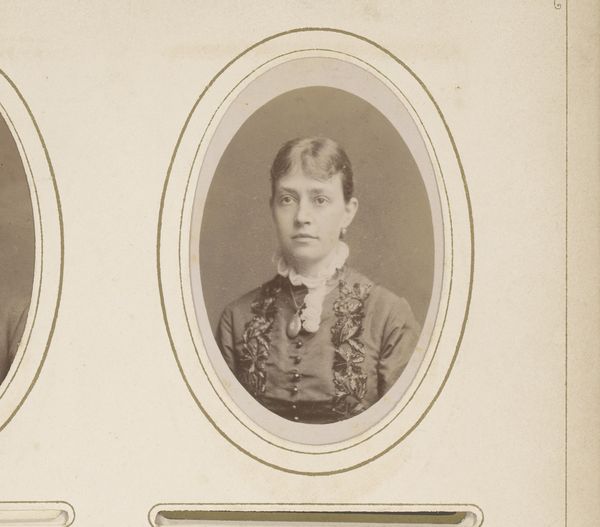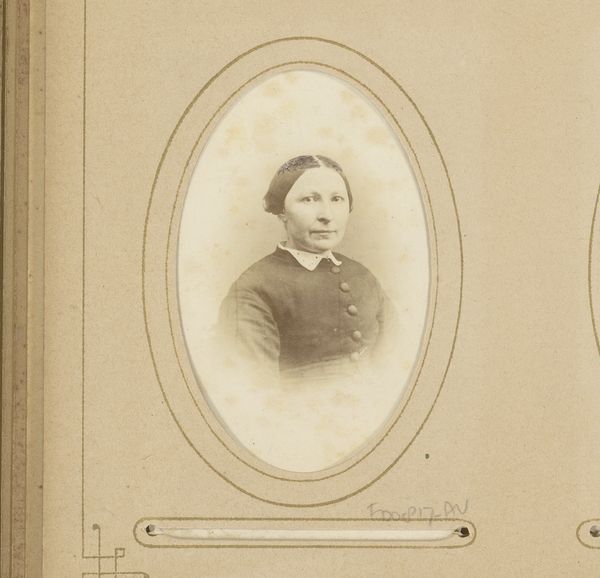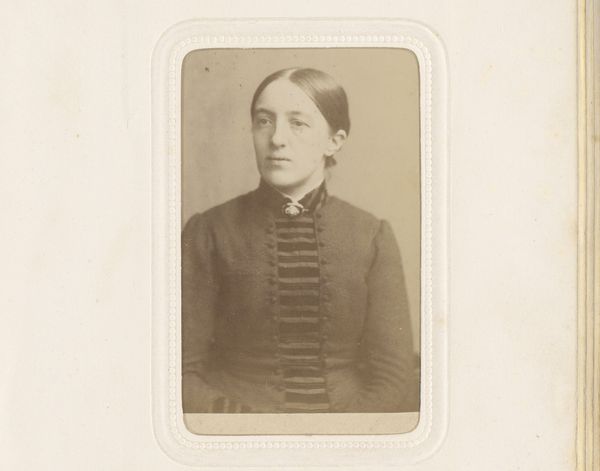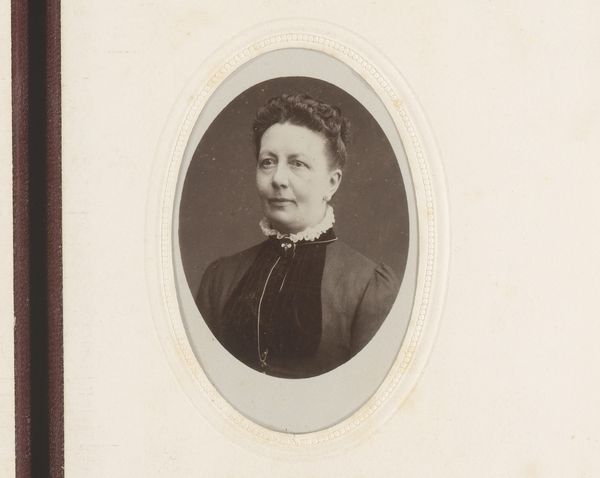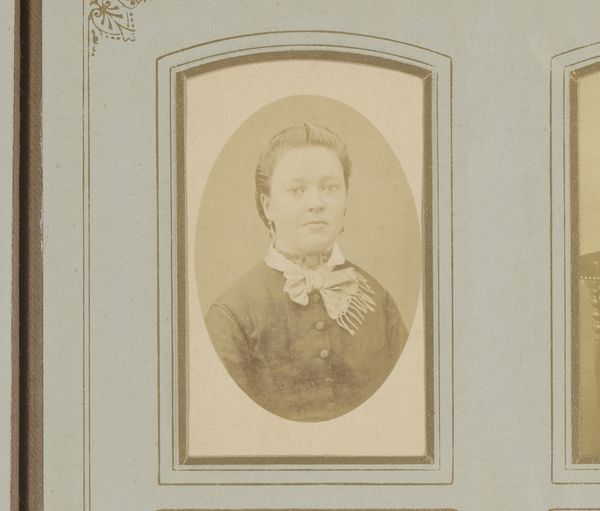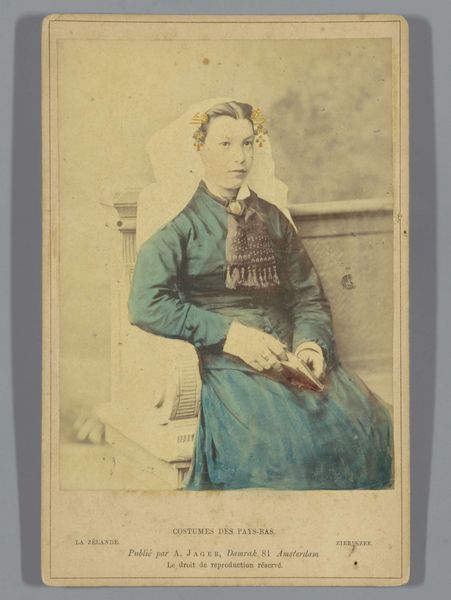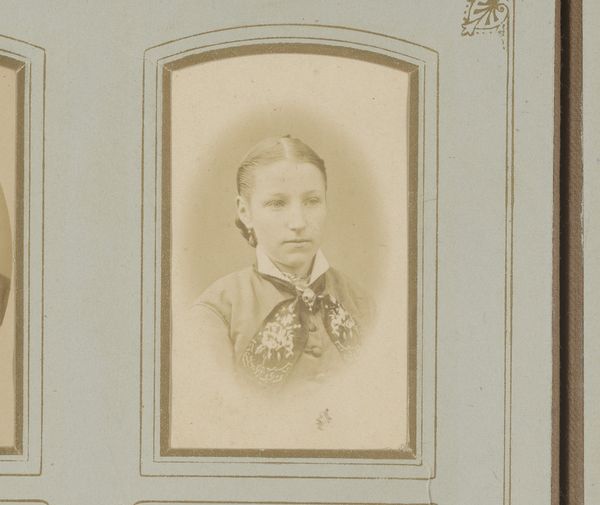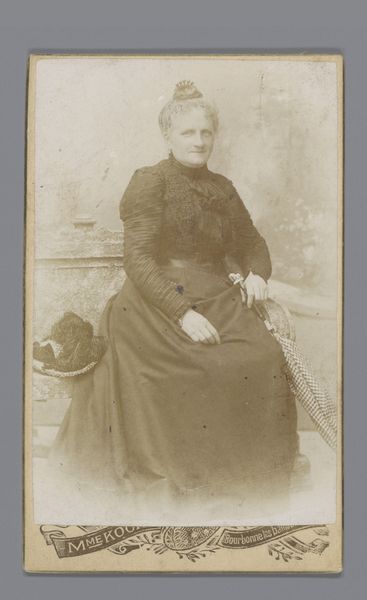
photography, gelatin-silver-print
#
portrait
#
still-life-photography
#
photography
#
historical photography
#
portrait reference
#
gelatin-silver-print
#
19th century
#
history-painting
#
realism
Dimensions: height 93 mm, width 60 mm, height 107 mm, width 65 mm
Copyright: Rijks Museum: Open Domain
Editor: This is a photograph titled "Portret van een vrouw met een baby" by M. Frankfurter, likely created sometime between 1850 and 1900. It’s a gelatin-silver print, and it really evokes a sense of Victorian domesticity. It’s also quite striking. What do you see in this piece? Curator: What I immediately notice is how the symbols of motherhood are presented here – not just the literal presence of mother and child, but the *staged* representation of that bond. Think of Mary and Jesus – the visual echoes of this archetypal Madonna image reverberate even in early photographs. Does the chair seem a bit too grand for everyday use? Editor: I see what you mean about the chair! So, you’re saying even a seemingly straightforward image carries cultural weight from historical paintings and perhaps religious connotations, which add complexity. I hadn't really considered that the chair may have a symbolic importance. Curator: Precisely. The photographic medium was relatively new then. What better way to elevate a photograph of what might otherwise be considered ‘ordinary’ than to adopt symbols we are culturally taught to admire? The careful arrangement signals value: continuity, lineage, sanctity. The image creates its own type of devotional object, and an heirloom. Editor: So it’s both an intimate portrait *and* a conscious display of social values at that time. Do you think viewers understood that on a subconscious level? Curator: I think so. We read these visual cues almost instinctively; it's part of our visual literacy passed down over generations. Editor: That is fascinating! Now, when I look at this portrait, I am wondering how much we miss by forgetting to recognize cultural memory embedded in visual language. Curator: Indeed! These old images are like messages from the past if you have the code to unlock them. They teach us to ask *why* certain images and symbols have persisted and adapted through time.
Comments
No comments
Be the first to comment and join the conversation on the ultimate creative platform.
